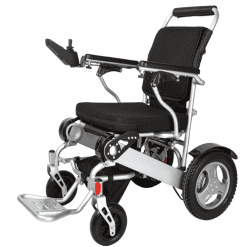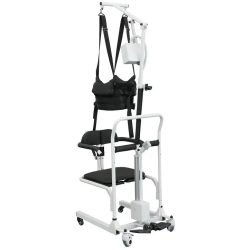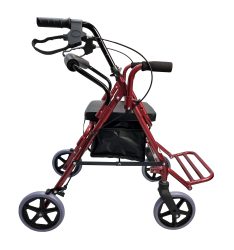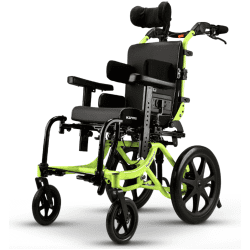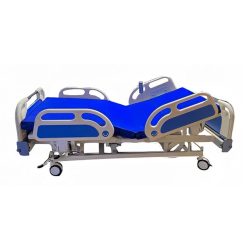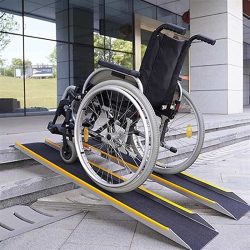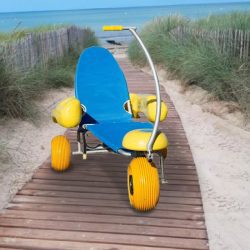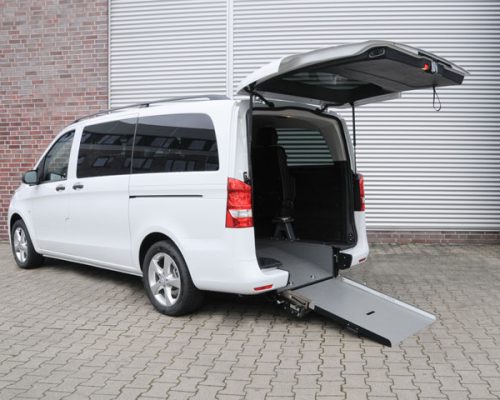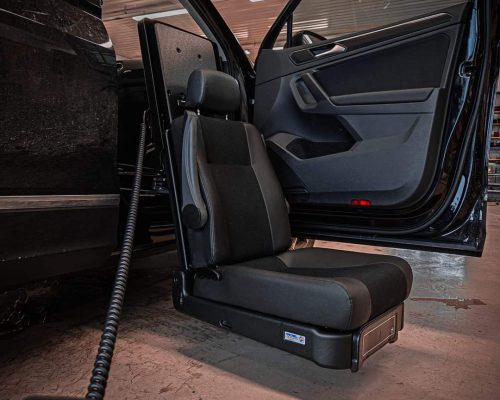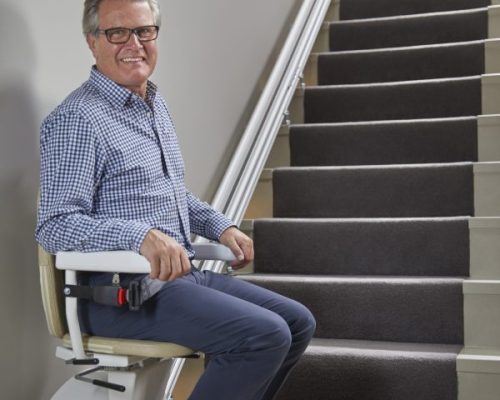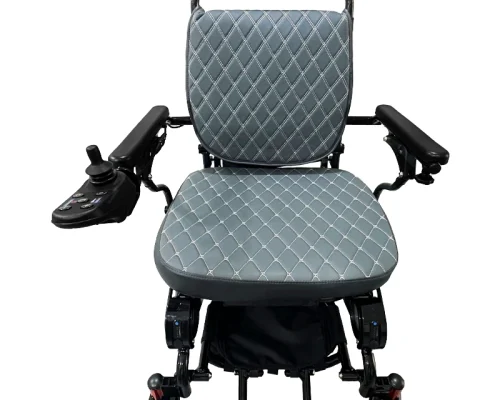Table of Contents
ToggleAre you tired of constantly pushing yourself up the path to get to your destination? You must have gotten sore muscles with all that force, no?
But worry not! Now you can easily motorize a manual wheelchair to make things easier and smoother for you!
This comprehensive guide will tell you the pros and cons of motorizing your manual wheelchair, how you can do that, and what are the differences between manual and motorized wheelchairs, so sit tight! You’re in for an exciting ride!
Motorized Wheelchair Vs. Manual Wheelchair
Wheelchairs have served many people with mobility aid for ages now, but as they say, technological advancements never stop!
Manual wheelchairs are a thing of the past and motorized wheelchairs are the talk of town now!
What are the key differences between a manual and a motorized wheelchair, you must be wondering?
Let’s check out these in a summarized form!
Key Differences Between Manual Wheelchairs and Motorized Wheelchairs
Propulsion
- Manual wheelchairs: Require the user to propel themselves using their upper body strength.
- Motorized wheelchairs: Are powered by an electric motor, eliminating the need for the user to exert physical effort.
Mobility and Range
- Manual wheelchairs: Are generally suitable for shorter distances and indoor use.
- Motorized wheelchairs: Can cover longer distances and handle various terrains, including outdoor environments.
Maneuverability
- Manual wheelchairs: Are typically easier to maneuver in tight spaces due to their smaller turning radius.
- Motorized wheelchairs: May require more space to turn due to their larger wheels and motors.
Features and Controls
- Manual wheelchairs: Have simpler designs with fewer components and controls.
- Motorized wheelchairs: Offer a wider range of features, including adjustable seats, tilt and recline functions, and advanced control systems.
Suitability
- Manual wheelchairs: Are suitable for individuals with moderate upper body strength and those who prefer the exercise and independence of self-propulsion.
- Motorized wheelchairs: These are ideal for individuals with limited upper body strength, those who require extended mobility, or those who prioritize convenience and reduced physical strain.
Cost and Maintenance
- Manual wheelchairs: Are generally less expensive than motorized wheelchairs due to their simpler design.
- Motorized wheelchairs: Have higher initial costs and require more regular maintenance.
Explore: Wheelchair Handcycle
Motorize Your Manual Wheelchair At Home
Ease up your mobility by motorizing your manual wheelchair so that you don’t have to put in so much force to make yourself easily mobile. It is a super easy process and you can easily do it at home with just a few tools and by following this easy guide. Buckle up!
Motorizing a manual wheelchair offers a plethora of benefits, including reduced physical strain, increased range, and enhanced accessibility. While looking for professional assistance for wheelchair motorization is always recommended, and most people prefer to do the process at home.
This DIY guide will provide you with the necessary steps and considerations for motorizing your manual wheelchair effectively.

Gathering the Necessary Tools and Materials
Before embarking on the motorization project, ensure you have the following tools and materials at hand:
- Motorization kit: Select a compatible motorization kit that matches your wheelchair model and desired features.
- Hand tools: Gather essential tools like screwdrivers, wrenches, and pliers.
- Safety equipment: Wear safety glasses and gloves to protect yourself during the installation process.
Preparing Your Manual Wheelchair
- Clean and inspect your wheelchair: Thoroughly clean the wheelchair frame and components to remove any dirt or debris. Inspect the wheelchair for any damage or structural issues that may affect the installation process.
- Remove existing wheels: Carefully remove the rear wheels of your manual wheelchair, following the manufacturer’s instructions. Store the removed wheels safely for future use.
Installing the Motorization Kit
- Follow the kit instructions: Carefully read and follow the instructions provided with your specific motorization kit. Each kit may have unique installation procedures and wiring diagrams.
- Attach the motor mounts: Securely mount the motor brackets to the wheelchair frame as per the kit’s instructions. Ensure the brackets are aligned correctly and provide a stable foundation for the motors.
- Install the motors: Attach the motors to the motor mounts, ensuring they are properly aligned and connected to the motor control system.
- Connect the battery: Carefully connect the battery to the motor control system, following the kit’s wiring diagram. Ensure the connections are secure and protected to prevent damage.
- Attach the control panel: Mount the control panel in a convenient and accessible location, as per the kit’s instructions. Connect the control panel to the motor control system using the provided cables.
- Test the system: Before attaching the new wheels, carefully test the motorization system by turning on the control panel and activating the motors. Ensure the motors respond correctly to the controls.
- Attach the new wheels: Install the new motorized wheels onto the wheelchair frame, following the kit’s instructions. Ensure the wheels are securely attached and properly aligned.
Safety Considerations
- Power source safety: Always handle the battery and electrical components with care. Disconnect the battery when not in use or performing maintenance.
- Grounding: Ensure the motorization system is properly grounded to prevent electrical hazards.
- Testing and maintenance: Regularly test the motorization system to ensure it is functioning properly. Perform routine maintenance and cleaning as recommended by the kit manufacturer.
- Seek professional assistance: If you encounter any difficulties or safety concerns during the installation or operation of the motorization kit, consult a qualified technician or mobility specialist.
Pros And Cons of Motorized Wheelchairs
Pros
- Reduced Physical Strain
- Better & faster mobility
- Less Fatigue
- Increased Independence & MANY MORE!
Cons
- High-maintenance
- Size and weight, and hence difficulty in some outdoor environments
Final Thoughts
In conclusion, motorizing a manual wheelchair can significantly enhance your mobility and independence. While DIY motorization is possible, it requires careful planning, attention to detail, and adherence to safety guidelines. If you lack technical expertise or have any doubts, seeking professional assistance is always recommended to ensure the safe and reliable operation of your motorized wheelchair.

